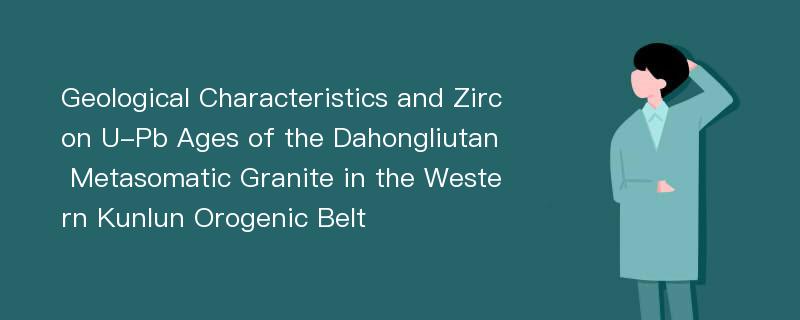
论文摘要
The West Kunlun Orogenic Belt(WKOB) in the southwestern part of Xinjiang was formed as an important part of the Central Orogenic Belt of China, as the belt occupies a key tectonic junction between the southward growth of the PaleoAsian continent and the evolution of the Tethyan tectonic domains(Xiao et al.,2005). The WKOB with frequent magmatic activity, wide distribution of granitoid rocks is an ideal place to study the diagenesis of granites in orogenic belts. The Dahongliutan rare metal pegmatite mining area is situated in the south of the Mazha-Kangxiwa fault in the eastern part of the western Kunlun orogenic belt and the north side of the Tianshuihai. In recent years, great breakthroughs have been achieved in prospecting in Dahongliutan area of West Kunlun. At present, more than 2,000 pegmatite veins and 8 lithiumberyllium mineral sites have been discovered, with Li2O resources of more than 2 million tons, with an average grade of 1.5%. This is the primary super-large pegmatite-type lithium deposit discovered in the West Kunlun metallogenic belt in China, showing great prospecting potential. Due to the weathering of the source area, some granite bodies in the area are altered. This paper discusses whether the diagenetic age of Dahongliutan intrusion coincides with metasomatic granites? Is there a genetic connection between the metamorphic hydrothermal fluid and the Dahongliutan rock mass? The Dahongliutan rock mass is situated about 150 km southwest of Hotan County, with convenient transportation. The geotectonic position belongs to the Tianshuihai-Karakoram in the South China plate, the northern part of the Karakorum, the south side of the Mazha-Kangxiwa suture zone. The surrounding rocks are Triassic Bayan Kalashan Group and the Paleoproterozoic Kangxiwa Group. The rock mass has obvious lithofacies zoning, mainly including biotite monzonitic granite, biotite soda granite and two mica granite. The metasomatic granites are mainly migmatized granite. The mineral assemblage is composed of quartz(30-35%), microcline(25-30%), andesine(20-25%), Muscovite(10-15%) and biotite(10-15%). With the accessory minerals of zircon, apatite(<5%), and have massive structure, medium to coarse grained texture. The andesine with strong sericitization is commonly granular. Tourmaline is embedded in it. Strong silicification and potassium occur in rocks, and the metasomatism is quite obvious.Zircons for LA-ICP-MS U–Pb dating were handpicked under a binocular microscope, then zircon grains were mounted in epoxy. The spot size used was 30μm in diameter. Calculations of zircon isotope ratios were conducted by ICP-MS DataCal and age calculations were performed using Isoplot 3.7 software. The errors for the mean ages are quoted at 90% confidence levels. Zircon in 4 metasomatic granites is relatively complex, and the test results vary widely. Sample D006: Zircon is columnar crystal with a length of about 40-120 μm and an aspect ratio of about 1:1-1:2. It has obvious os
论文目录
文章来源
类型: 国际会议
作者: DING Kun,LIANG Ting,YANG Xiuqing,DING Liang,LI Cong
来源: 第九届世界华人地质科学研讨会 2019-06-01
年度: 2019
分类: 基础科学
专业: 地质学,地质学,地质学
单位: College of Earth Sciences and Resources, Chang’an UniversityMineralization and Dynamics Laboratory of Chang’an University
分类号: P597.3;P588.121
DOI: 10.26914/c.cnkihy.2019.028380
页码: 181-182
总页数: 2
文件大小: 148k
下载量: 1
